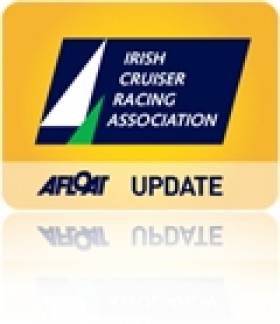Displaying items by tag: Quokka
Irish Quokka Result at Les Voiles De St. Barths Bodes Well for July's Commodore's Cup
"Quokka" is the "small" boat on this year's Commodore's Cup team and we had a fantastic week in Les Voiles De St. Barths. We managed to win the regatta with straight bullets but were pushed hard all the way by a well sailed J111 and an A40 writes Maurirce O'Connell.
"Quokka" was was chartered for the week by an Irish consortium headed by ex "Blondie" owner Eamon Rohan, his sister Sonia and her husband. It was fun to race with Eamon again, not having raced together since the "Blondie" days. She was renamed "Ramanessin" for the week.
From an Irish perspective, in addition to Sonia (pit assist) and Eamon (trim) aboard, we also had North Sails colleagues Jeremy Elliott (trim) and Nigel Young (tactics), "Jump Juice" team-mate Colm Dunne (mainsheet) and "Fever" team-mate Keith Glynn (bow). We had 13 team members in total aboard and the craic was mighty.
It was an invaluable boat familairisation week because we will be racing the same boat in June and July under Michael Boyd and Niall Dowling's leadership for the assault on the Brewin Dolphin Commodore's Cup.
Irish Commodore's Cup 'Green Team' Named; Antix, Catapult & Quokka
#commdorescup – An American and a British yacht will join Royal Cork's Antix to form the 'Green Team' to win the Commodore's Cup for Ireland it has been officialy announced. The three boat team is Catapult, a Ker 40 owned by Mark Glimcher of the United States; Anthony O'Leary's Ker 39, Antix from Royal Cork; and the RORC Yacht Quokka, a Grand Soleil 43, being chartered by Royal Irish sailors Michael Boyd and Niall Dowling. There will be a strong Irish crew involvement on all three boats comprising of sailors who first won the Cup for Ireland in 2010. Crew list announcements are expected to follow.
In what was sailing's worst kept secret of the year so far the Irish Cruiser Racing Association (ICRA) finally announced this morning the Irish team line–up for this Summer's Cup. Details of the team were previously reported on Afloat.ie
ICRA has been working for some time to assemble a top level Irish Team for this year's event, taking place off Cowes, Isle of Wight between 19th and 26th July 2014.
Catapult has won the US IRC Nationals, Cork based Antix is a seasoned and successful campaigner and a winning Commodores' Cup team member in 2010. Quokka is an extremely competitive IRC boat with a strong track record. The Team's campaign will begin with the Warsash Spring Series in the Solent followed by various other regattas including the UK IRC Championship in mid-June.
ICRA Commodore, Norbert Reilly welcomed the development of such a high calibre team. ICRA also say they have serious interest from a fourth boat to form a second team and are inviting interest from another two boats to form Ireland Orange Team.
























